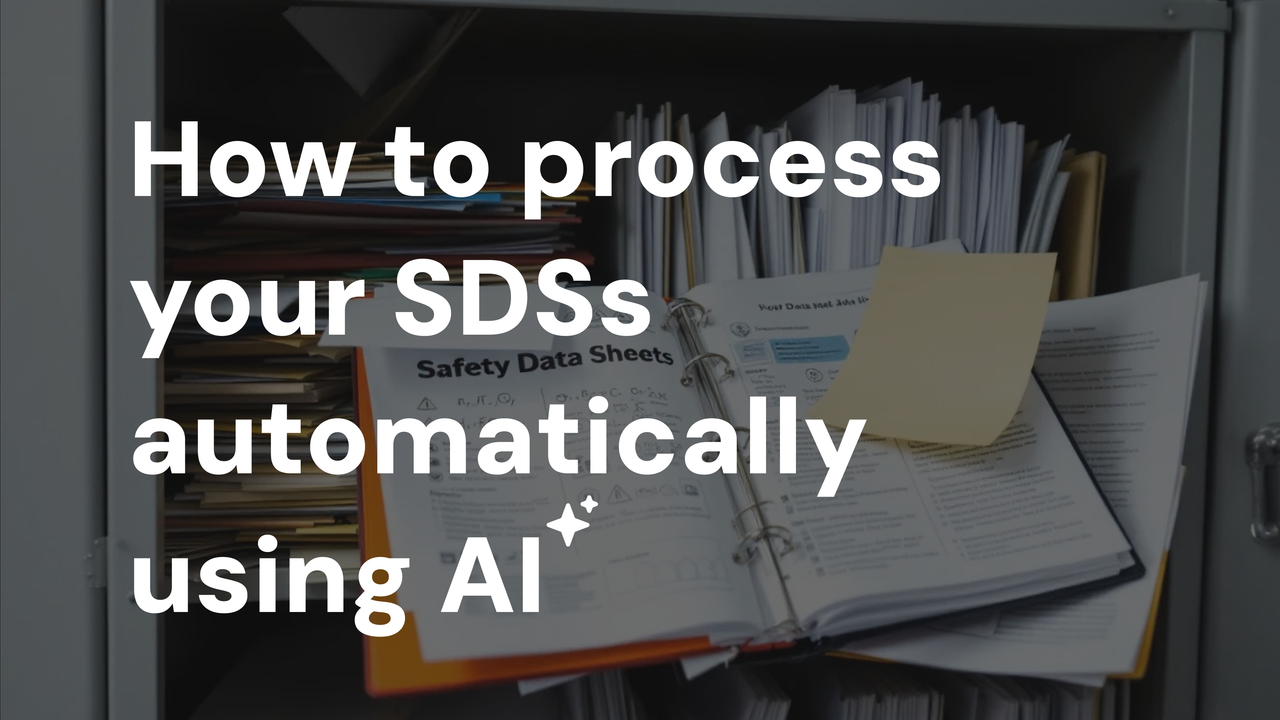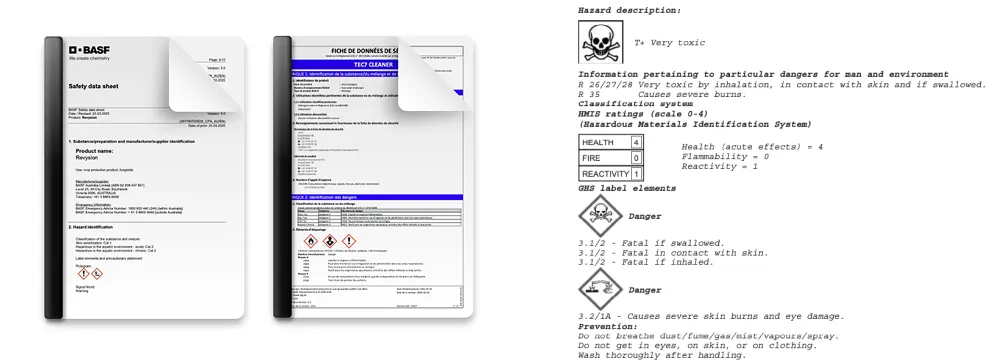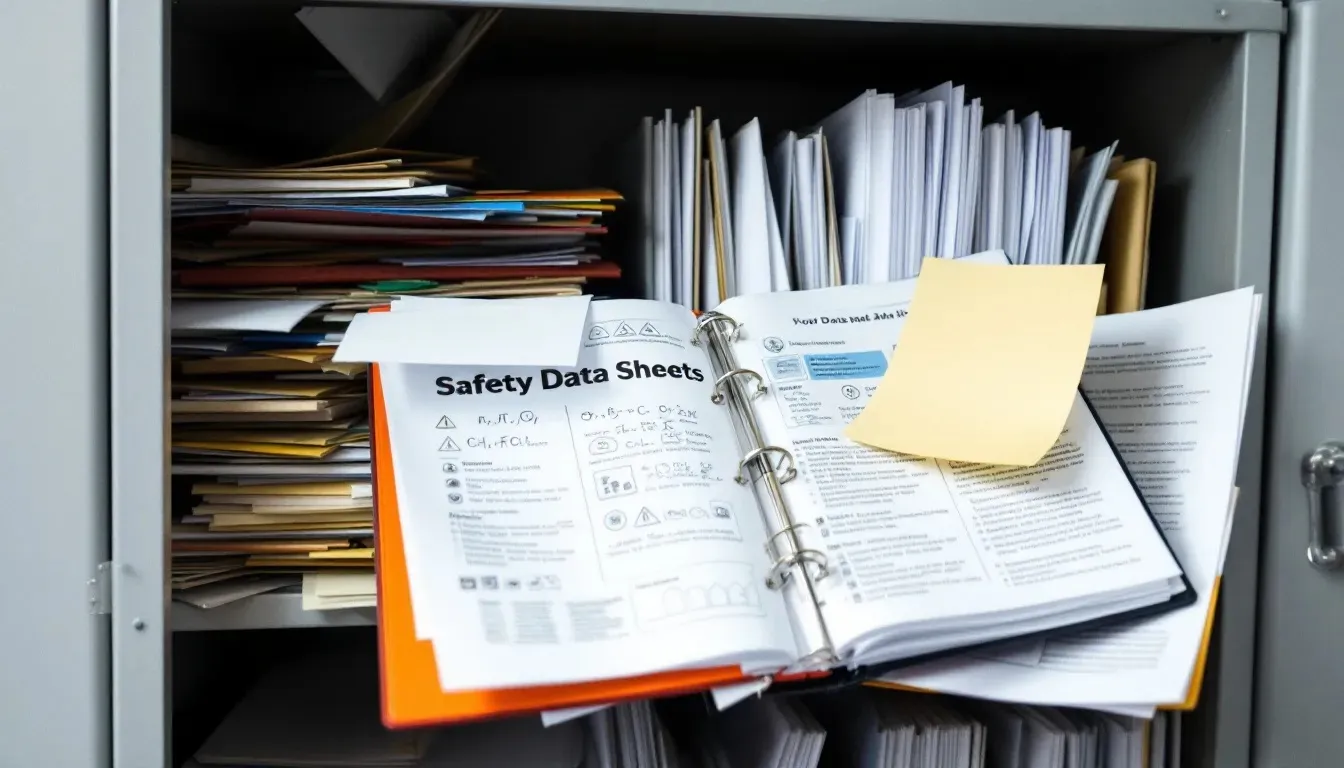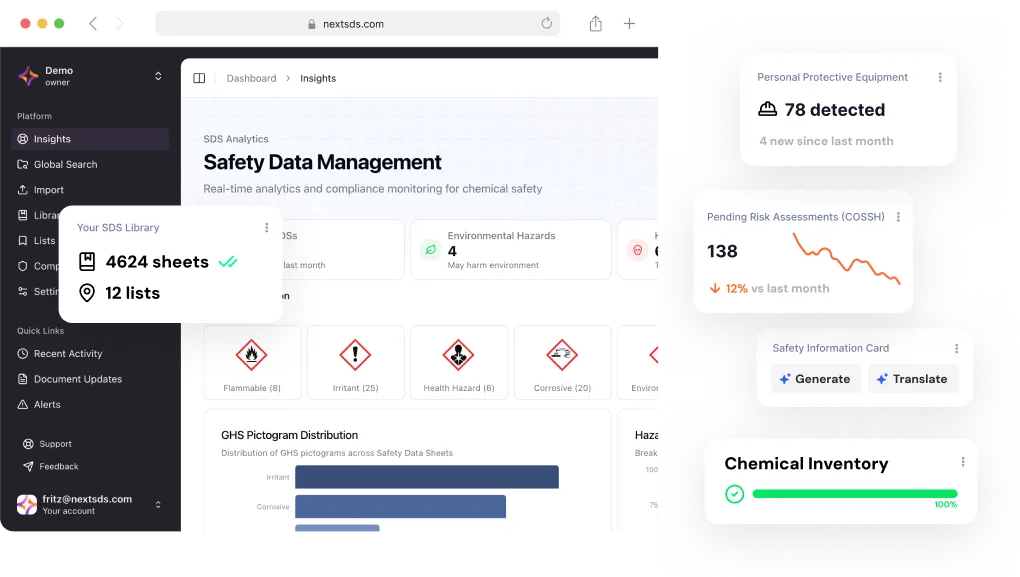
You know that stack of dusty Safety Data Sheets living on your server or, worse, in a binder somewhere near the coffee machine? Yeah, the one no one wants to open. That’s the one.
Processing SDSs - extracting useful data from them, making sense of hazard info, keeping everything compliant - is one of those tasks that feels like it belongs in a 1990s office montage. It’s manual, tedious, error-prone… and, let’s be honest, everyone tends to avoid until audit season rolls around.
But hey, good news: AI is here, and it’s actually (really) useful this time!
SDSs are like IKEA manuals for chemicals - except they’re longer, more cryptic, and if you mess up interpreting one, someone might end up with chemical burns.

Processing an SDS involves:
And if your company uses more than a handful of chemical products? That spells a lot of manual work.

Here’s where AI shows up like the competent army of interns we all wish we had - working 24/7, never asking for coffee breaks, and somehow complete experts in chemical safety.
AI can scan and interpret even the weirdest PDF or Word layout. Whether your SDS is a crisp template or a scanned blob from 2007, AI uses Optical Character Recognition (OCR) and Natural Language Processing (NLP) to extract the good stuff.
Fair warning: just using off the shelf tools like ChatGPT is not enough to guarantee high enough accuracy or avoid hallucinations. Proper manual validation will still be required.
Your AI doesn’t just read the SDS - it understands it. It can figure out which phrases indicate flammability, skin irritation, or the need for PPE, even when manufacturers don’t make it easy. Bonus: it can translate terms across virtually any language.
Instead of 16 pages of confusing tables, AI can generate a readable safety information card in minutes - short, visual, and understandable to the folks actually handling the chemicals, dramatically increasing safety.
Also here - using general tools will definitely require manual corrections.
AI can take exposure frequency, danger level, and probability, and turn them into risk assessments. Think of it as a safety score for each substance - no more guesswork. Add the exposure and frequency and presto, compliant ánd comprehensive risk analysis report in minutes.
AI can help build a live chemical inventory based on
You can link across locations or departments, helping you stay organized and compliant easily.
Imagine a manufacturing company. They have different plant sites, using different chemicals, each product has its own 15-page SDS in Dutch, French, and “Manufacturer-English.”
With NextSDS, they:
Now they’re not just manufacturing, they’re manufacturing safely.
At NextSDS, we built an AI-powered platform that takes SDS pain and turns it into safety gain:
⚠️ Be careful: simply using a tool like ChatGPT does not guarantee enough accuracy and is prone to hallucinations, let alone streamlining processes.
Our every-improving SDS workflow using a myriad of AI agents can be plotted to the size of a wall for a reason.

And because we hope you have better things to do than manually comb through SDS documents.
👉 Try NextSDS right now, upload your first SDS and see how magical compliance can feel.
And hey - if you liked this article, consider sharing it with your favorite safety officer! Be their hero.
Want to see how it works?
👉 Book a free demo of the NextSDS platform
👉 Get started for free!